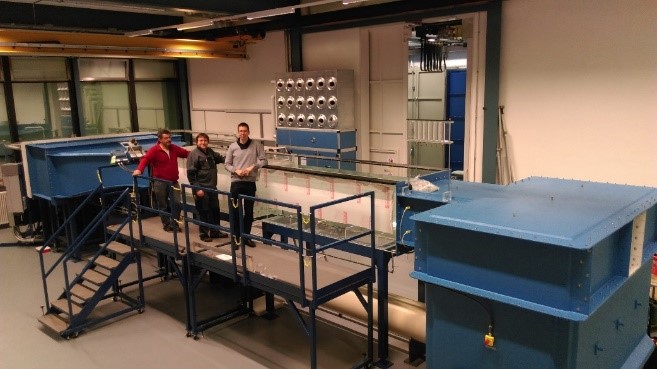Atmospheric boundary layer water tunnel
Our large-scale atmospheric boundary layer (ABL) water tunnel has a test section cross section of 0.6 x 1 m² and can produce water speeds from 0.03 – 1 m/s. This water tunnel is equipped with a stereoscopic PIV-LIF system (particle image velocimetry & laser induced fluorescence, acquisition frequency up to 100 Hz). This enables non-intrusive, time-resolved imaging of the flow field as well as temperature and concentration fields in the water flow.
In the water tunnel we study experimentally the urban microclimate at different scales: the urban heat island effect, the removal of heat from cities and neighborhoods by urban ventilation driven by wind and buoyancy effects.
This facility complements our existing ABL wind tunnel facility. Particular advantages of the water tunnel are: (1) a water tunnel is more suitable to study buoyant and mixed convective flows in the urban environment at different scales compared to the wind tunnel due to the use of water as a fluid and the associated lower speeds; (2) temperature or concentration fields can be measured simultaneously with the velocity field by combined PIV-LIF, by which heat and concentration flows and exchange processes in the urban canopy can be quantified which is less feasible in a wind tunnel.
